Archives of Otorhinolaryngology-Head & Neck Surgery (AOHNS) is a branch of SciTeMed publishing group. AOHNS provides a new avenue for clinical investigators, clinicians, and trainees to publish their research. AOHNS is a journal with a vigorously, timely peer-review policy and a rapid publication process. AOHNS aims to bring about a change in modern scholarly communications to accelerate scientific discoveries and to help disseminate research to a wider readership, gain media attention and demonstrate professional achievement through publication. The mission of AOHNS is to promote research in science for the benefit of humanity and to advance the science and practice of otorhinolaryngology as well as head and neck surgery. AOHNS is a reliable journal with a scope of high-quality science information that will lead in terms of attracting the best possible science that can provide the best impact.
The content area of AOHNS is broad, and it will encompass all of the subspecialties of Otorhinolaryngology-Head and Neck Surgery. Subject areas include, but are not limited to, general otolaryngology, allergy, rhinology, otology, neurotology, laryngology, bronchoesophagology, head and neck surgery, sleep medicine, pediatric otolaryngology, facial plastics and reconstructive surgery, oncology, and communicative disorders. AOHNS features original research, analyses and reviews, news, practice updates, thought-provoking editorials, expert opinion articles, forward-looking perspectives, commentaries, image, and book reviews. The journal will also accept contributions that present innovative and improved methods, or resources that advances basic research with broad interests. AOHNS embraces new and emerging trends quickly by periodically publishing special issues.
In October 2021, the prestigious Stanford University has recently published an update of the list of the top 2% most widely cited scientists in different disciplines, the World's Top 2% Scientists. This ranking, considered the most prestigious worldwide, is based on the bibliometric information contained in the Scopus database and includes more than 190,063 researchers from the more than 8 million scientists considered to be active worldwide, with 22 scientific fields and 176 subfields taken into account.
Our Editor-in-Chief Dr. Holger Sudhoff and Deputy Editor Dr. Chin-Lung Kuo of Archives of Otorhinolaryngology-Head & Neck Surgery were recognized in the list of the World's Top 2% Scientist. The SciTeMed Publishing group would like to congratulate Dr. Holger Sudhoff and Dr. Chin-Lung Kuo for this honor that has brought great pride to our journal.
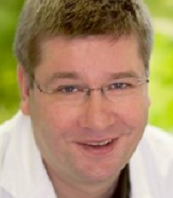
Professor Holger Sudhoff completed his training on otolaryngology, head and neck surgery in June 2000. During his training, he has had exposure to a broad spectrum of otorhinological procedures, as well as more specialized areas described below. As a fellow, he gained invaluable basic science research and laboratory skills. He has had broadened surgical experience by operating both independently and within a team framework. His passion for teaching has created an atmosphere receptive to learning. His Skull-Base fellowship in Cambridge provided him with outstanding skills in that surgery as well as insights into the NHS structure. In his current post, he has undertaken all the administrative, teaching and on-call duties associated with a professorial chairmanship in a busy teaching hospital serving a population of eastern Westphalia in Bielefeld. This post has provided Professor Sudhoff with the opportunity to gain vast experience at the level of executive responsibility and to gain further insight into all management issues and public relations, pertaining to running an ENT unit, such as organization and prioritization of operating lists, outpatient clinics and overseeing all financial developments. Professor Holger Sudhoff and his team have created one of the largest German ENT units over the last 10 years. In February 2013 Professor Sudhoff co-founded the German Skull Base Center in Bielefeld treating currently 120 major skull base cases annually. Professor Sudhoff served as President of the West-German ENT society in 2015 and was elected for Focus magazine of “Top Medical Doctors” for Otorhinolaryngology in Germany in 2013 to 2017. He was elected as a board member of Politzer Society in July 2015 in Niigata, Japan.
Professor Sudhoff worked with Professor Henning Hildmann and Professor Jan Helms, his otology supervisors, leading otologists / lateral skull base surgeons at the Bochum and Würzburg Universities. During Professor Sudhoff training and work as a Consultant, Professor Sudhoff has a extensive experience in middle ear procedures. He has participated as an invited lecturer in many national and international courses performing live surgery. Professor Sudhoff has received further training in the management of lateral skull base tumours and acoustic brainstem implants (ABI) in Cambridge, UK under the supervision of Mr. David Moffat, Mr. Patrick Axon and Mr. Robert Macfarlane (Neurosurgeon). Professor Sudhoff organized the multidicipinary skull base meetings as well as the NF2 clinics. He received training in all aspects of middle ear and skull base surgery, and reached the stage of developing independently new procedures (e.g. Balloon Eustachian Tuboplasty) in middle-ear surgery and in the management of all diseases of lateral skull base pathologies). He has developed the cochlear implant service in Bielefeld and started an implantable hearing devices program for active middle ear implants and bone anchored hearing aids During a humanitarian medical trip to Egypt in 01/2011 he treated several patients with gunshot injuries. Additionally, Professor Sudhoff along with the neurosurgeon Pofessor Falk Oppel supports a humanitarian project initiated by Professor Henning Hildmann in Ruanda, Africa and in the Ukraine.
Professor Sudhoff has received extensive training in the management of benign and malignant head and neck disease. He is competent and confident in performing a wide range of head and neck surgical procedures, ranging from thyroid and parotid surgery to managing tertiary referral oral and oropharyngeal tumours, and complex transfacial approaches for malignant skull base disease in both adult and paediatric patients. The latter includes midfacial degloving (e.g. for angiofibroma’s), lateral pharyngotomy as well as maxillary swing and other facial disassembly approaches. He also received extensive training in transoral laser microsurgery for primary and post-radiation-failure management of head and neck cancers. With regards to reconstruction, while he prefers to work in a multi-disciplinary team with plastic surgeons.
Professor Sudhoff has developed many research protocols from planning to implementation, publication and finally leading to a change of clinical practice. He was able to establish two research laboratories (Bochum University and Bielefeld) and generated the funding for both labs without intramural funding. Professor Sudhoff has experience in tissue processing, cell culture, ELISA, Radio-Immunoassay, Gel Electrophoresis, Transmission Electron Microscopy, Scanning Electron Microscopy, Immune Electron Microscopy, Molecular Biological Techniques such as m-RNA/DNA Extraction, Reverse Transcription, PCR, Mircoarray analysis, In-situ hybridisation, genetic probe analysis and zymography. Additionally he established a temporal bone dissection laboratory.
Professor Sudhoff has been successful in obtaining appropriate ethical and grant approvals of several Million Euros, the latter from numerous sources, both at a formal Scholarship Level to National Research Agency (Deutsche Forschungsgemeinschaft, DFG. Professor Sudhoff has also been involved in several multi-centre clinical trials as well basic science research resulting in more than 190 publications in peer reviewed journals, 43 book chapters and 6 books. The overall impact factor now 400 and there is a Hirsch index of 27. Research on Eustachian tube dysfunction led directly to the development of the novel technique of balloon dilation tuboplasty (BET), which is now scattered worldwide. Several research projects are currently performed in Bielefeld, also in cooperation with Harvard University, USA and Cambridge University, UK. Professor Sudhoff is on the editorial board of 12 peer reviewed journals.
Holger Sudhoff, MD, PhD, FRCS (London), FRCPath (London)
Editor-in-Chief
Archives of Otorhinolaryngology-Head & Neck Surgery
President
Department of Otolaryngology-Head and Neck Surgery
Bielefeld Academic Teaching Hospital, Muenster University, Bielefeld, Germany
Email: aohns.chief@scitemed.net
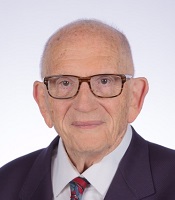
Dr. Grossan is a consultant for: Los Angeles County District Attorney, U.S. Department of Labor, Freemont Insurance, Water and Power, Industrial Indemnity, Los Angeles City, L.A. County, Culver City, Manhattan Beach, and others President, Los Angeles Chapter of Phi Lambda Kappa Medical Fraternity. He was awarded the Certificate of Merit for the Scientific Exhibit "Nasal Mucociliary Flow", by American Medical Association
Dr. Grossan is an expert in bio-feedback and teaches his patients his action program which includes using a mirror as a bio-feedback mechanism. He is known for original thinking, especially for drug free therapies he has developed for tinnitus, empty nose syndrome, allergy, sinusitis and others.
Murray Grossan, MD
Honorary Editor-in-Chief
Archives of Otorhinolaryngology-Head & Neck Surgery
Board Certified Otolaryngology and Head and Neck Surgery
Department of Otolaryngology-Head and Neck Surgery
Cedars Sinai Hospital Medical Towers
8631 W. 3rd Street Suite 440 E, Cedars Sinai Hospital Medical Towers,
Los Angeles, USA
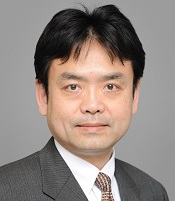
Prof. Meiho Nakayama was graduated from Aichi Medical University, Nagoya, Japan in 1985. He completed his residency and obtained a PhD degree in 1992. He spent three years (1992-1995) working as a visiting professor and research fellow in the Department of Otolaryngology, Southern Illinois University School of Medicine, USA with Prof. Horst R. Konrad, Dr. Robert Helfert, and Dr. Leonard Rybak. Prof. Nakayama specializes in vestibular function, rehabilitation, and basic research of vestibular organs. After returning from the USA, Prof. Nakayama established a sister school relationship between Aichi Medical University and Southern Illinois University and continued a good relationship with numerous students and researchers. Prof. Nakayama became Assistant Professor (1995-2001) and Associate Professor (2001-2007) in the Department of Otolaryngology, Aichi Medical University. During this time (2000-2007), he was also engaged as the Associate Director with the Sleep Center of Aichi Medical University.
Prof. Nakayama moved to the Department of Otolaryngology, Nagoya City University as Associate Professor from 2008 to present and established the Good Sleep Center as its Chief Director. Since then, He started new research on sleep disorders. In addition to equilibrium research, he combined his skills in otoneurology and discovered a new relationship between otoneurological diseases and sleep disorders. Since he could speak Japanese, English, Taiwanese, and Chinese, he was invited for teaching and research cooperation, and also received researchers from Asian countries such as Xian Jiotong University and Dalian Medical University China. Recently, he has been engaged as a visiting professor with the Sleep Medicine Center and the Department of Otolaryngology, National Cheng Kung University, Taiwan. Rarely in the history of medical science, as a physician working on both otoneurology and sleep medicine, he is creating a new medical field connected with the two mysterious diseases.
Clinical Experience
After completion of his PhD degree on vestibular function and microscopic research of the vestibular organs, Professor Nakayama was trained as an otology surgeon under Prof. Isao Takimoto, Professor Horst Konrad, and Professor Shinzo Murakmi, and had experienced more than a thousand ear surgeries. Since the establishment of Good Sleep Center, he had focused on sleep apnea surgeries, especially for children. In 2010, he cooperated with Prof. David Gonzal in the Department of Pediatrics, University of Chicago, and discovered seasonal changes on sleep apnea children that offered new information for surgical indication internationally in 2013.
Prof. Nakayama spent most of his time on vestibular research for the last thirty years. While he worked with Professor Horst Konrad at the School of Medicine, Southern Illinois University, the group paid attention to working on vestibular rehabilitation that was not recognized well in 1992. Prof. Nakayama attended vestibular teaching courses as a lecturer and played an important role in publishing the rehabilitation textbook, entitled Vestibular Rehabilitation Therapy for the Patient with Dizziness and Balance Disorders: Exercise Protocols, with the Southern Illinois University group at that time. Prof. Nakayama is a good friend of Dr. John Epley and supported his research for Benign Paroxysmal Positional Vertigo to complete the study on OMIAX chair in 2002. He is a leader and takes more than a thousand dizzy patients a year in his clinic with a balanced group in Nagoya City University Hospital. Prof. Nakayama has been the Chief Director of the Good Sleep Center since 2010 and has brushed up on his skills in sleep apnea surgeries. He also discovered a new research on both balance and sleep medicines.
Prof. Nakayama has identified several patients with Meniere's disease who suffered from sleep disorders. Attracted by this new topic, he was invited by the American Academy of Otolaryngology Society to introduce his new research in the balance disorders series in the journal entitled Current Opinion in Otolaryngology & Head and Neck Surgery in 2013. In clinical practice, he has focused on sleep apnea. A polysomnogram test was performed in more than 400 patients annually, with most of the cases sleep disorders such as hypersomnia, circadian rhythm sleep-wake disorders, or sleep-related movement disorders. Recently, his group has not only reported a new finding on the relation of globus pharyngeus and sleep disorders, but also offered a new expectation between otolaryngology and sleep disorders to all otolaryngologists in the world.
Meiho Nakayama, MD, PhD
Honorary Editor-in-Chief
Chief of Good Sleep Center, Nagoya City University, Japan
Associate Professor of the Department of Otolaryngology, Nagoya City University, Japan
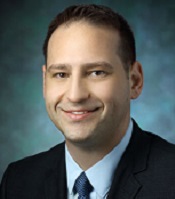
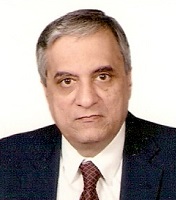
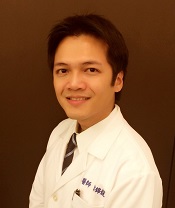
Dr. Chin-Lung Kuo earned his PhD from the Institute of Brain Science, National Yang-Ming University in Taiwan. He completed his otolaryngology residency, chief residency, and fellowship training at the Department of Otolaryngology-Head and Neck Surgery, Taipei Veterans General Hospital, Taiwan. He has focused his research on auditory neuroplasticity as one of his principal areas of study. He has been the first author or corresponding author of more than 70 publications, including two book chapters, original papers, and reviews. His research paper was selected as the cover story of the journal "Audiology and Neurotology" in 2012. Moreover, Dr. Kuo was awarded the Outstanding Paper Award in 2013 by the Laser Medicine Education and Research Foundation as well as the 2015 Hayashi SPIO (Society for Promotion of International Otorhinolaryngology) Scholarship in Japan. Stanford University has recently published an update on the top 2% of most widely cited scientists across different disciplines, the World's Top 2% Scientists for 2021. This ranking, considered the most prestigious worldwide, is based on the bibliometric information contained in the Scopus database and includes more than 190,063 researchers from the more than 8 million scientists considered to be active worldwide, with 22 scientific fields and 176 subfields taken into account. The list recognized Dr. Kuo as one of the top 2% scientists that has brought great pride to Dr. Kuo and his research team. Dr. Kuo believes that a greater accessibility to research data can benefit both medical research and science education. He is pleased to take on the role of deputy editor for Archives of Otorhinolaryngology-Head and Neck Surgery, a journal that strives to provide a new venue for researchers to publish their research and advance the field of otorhinolaryngology.
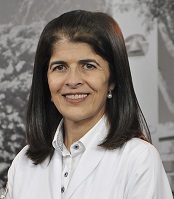
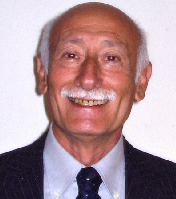
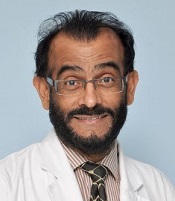
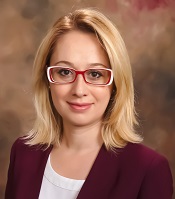
Dr. Akdagli is a physician at the Department of Anesthesiology, SUNY Downstate Medical Center, New York. She received her medical degree from Cerrahpasa Medical School, Istanbul; completed her training in Otolaryngology- Head and Neck Surgery (OHNS) at Goztepe Training Hospital Department of OHNS, Medeniyet University. Following her specialty training she practiced medicine at Tuzla Public Hospital, Istanbul and Etlik Training and Education Hospital, Ankara for two years. She was a visiting scholar at Stanford Department of OHNS between 2013-2016 with a focus on plastic surgery and rhinoplasty. During this time she also developed a keen interest in anesthesiology and from 2015 collaborated and worked together simultaneously with Stanford Department of Anesthesiology and Stanford Department of OHNS while authoring and co-authoring many peer reviewed publications in plastic surgery, rhinoplasty and anesthesiology. Her clinical interests focus primarily on critical airway management. She is married and has one child. Her hobbies include yoga, hiking and cooking techniques in authentic Asian and Mediterranean cuisine.
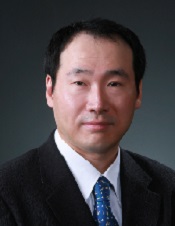
.png)
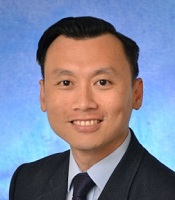
The author reframes review articles as evidence infrastructure that updates clinical consensus and identifies research gaps. The author argues that narrative reviews integrate findings across biological scales and translate molecular data into clinically meaningful explanations of disease behavior. Using cholesteatoma, the author illustrates how molecular evidence can recast invasiveness and recurrence into a mechanistic model that also motivates the pursuit of nonsurgical therapies. The author contrasts this interpretive role with systematic reviews, which function as reproducible decision chains grounded in transparent, verifiable methodology. Finally, the author cautions that AI assisted automation can propagate error unless it is governed by expert oversight within a human in the loop model that preserves auditable decision chains.
This study reframes postoperative opioid stewardship by showing that prescribing is not a uniform clinical reflex to pain. Instead, it is a multifactorial behavior shaped by procedure type, surgeon experience, and patient characteristics. An analysis of more than two thousand ambulatory otolaryngology cases revealed that surgical procedure exerts the strongest influence, with oropharyngeal operations linked to nearly threefold higher opioid quantities than nasal surgeries. Younger, recently trained surgeons prescribed substantially less. Counterintuitive racial and comorbidity patterns further exposed how implicit bias and clinical caution may coexist in prescribing behavior. By disentangling these procedural, provider, and patient determinants, the study challenges one-size-fits-all mandates and calls for precision prescribing frameworks that balance effective analgesia with the reduction of opioid-related harm. This paradigm shift urges clinicians and policymakers to replace volume-based control with individualized, evidence-driven stewardship grounded in real surgical practice.
This report presents the first documented case of parotid NUT carcinoma with an NSD3::NUTM1 fusion, characterized by rapid metastasis and patient death five weeks post-surgery. This outcome challenges prior reports suggesting favorable survival for non-thoracic NSD3::NUTM1 tumors, indicating potential parotid-specific aggression. By integrating 13 previously published cases with the current case, the article provides a comprehensive clinicopathological reference for this rare malignancy. While further validation is required, the findings advocate for targeted NUT immunohistochemistry and molecular profiling in undifferentiated parotid tumors. BET inhibitors show therapeutic potential, underscoring the need for early recognition and precision-based care.
This narrative review advances the management of radiation-induced dysphagia in head and neck cancer treatment by integrating advanced imaging, precision dosimetry, and structured rehabilitation. Beyond focusing solely on dysphagia-optimized intensity-modulated radiotherapy, it explores a variety of approaches: MRI and CT provide detailed anatomical insights, while proton therapy offers a less toxic alternative, and early rehabilitation preserves swallowing function. This holistic model prioritizes patient quality of life, detailing how techniques like Do-IMRT reduce radiation to critical structures like the pharyngeal constrictors and larynx, maintaining effectiveness. The review advocates a multidisciplinary approach, encouraging collaboration among oncologists, radiologists, and therapists to enhance long-term patient well-being and promoting further research to elevate care standards.
This article presents a comprehensive discussion of advanced techniques in managing pediatric airway obstructions caused by vallecular cysts. By employing awake fiberoptic intubation and transoral CO₂ laser microsurgery, the authors highlight a thoughtful, evidence-based approach that emphasizes both safety and precision. While not groundbreaking, the depth of analysis in the decision-making process and procedural techniques offers invaluable insights for clinicians, particularly in pediatric otolaryngology. The article serves as a critical reference for handling complex airway cases, balancing innovative practices with established methods. Its significance lies in its contribution to optimizing patient safety, particularly in high-risk infant cases, making it essential reading for healthcare providers dealing with airway management challenges.
This editorial analyzes the extensive social and familial effects of rigorous educational demands in Taiwan, illustrated by a case study of a 45-year-old female music teacher with sudden sensorineural hearing loss. Forced to skip her medical appointments due to her child's demanding academic schedule, the incident highlights the profound impact of intense educational routines on family life. It critiques the prioritization of academic achievement over well-being, which places undue stress on both children and parents, advocating for a reevaluation of the emphasis on scholastic success versus holistic development. The piece calls for educational reforms towards nurturing, developmentally appropriate strategies that support natural growth and foster a lifelong love for learning. It promotes innovative teaching approaches, early intervention, and strategic use of educational technology to enhance learning outcomes, urging systemic changes to better prepare students for today's complex world. Overall, this is a commendable editorial that offers valuable insights into the need for educational reform.
Joseph Campbell has explained many of the ancient and current myths and how they reflect our emotional needs. But the myths surrounding tinnitus are causing harm because doctors are not offering patients therapy that is available and patients are not seeking these therapies.
Disorders of mucociliary clearance (MCC) occur from thickening of the mucus so that cilia function is impaired. Or cilia may be impaired directly, as in chlorine exposure. Increased attention to MCC will aid in the reduction of antibiotic abuse.
Complete extirpation of the mucocele may be guaranteed by performing surgical excision of the lesion along with the associated glandular components to avoid recurrences. This is because the Blandin-Nuhn glands are not encapsulated, but are embedded to the musculature of the anterior tongue ventrum.
Clinicians should remain on high alert for oropharyngeal masses while evaluating chronic cough patients. When a mass lesion is observed in the tongue base, ectopic lingual thyroid must be considered in the differential diagnosis, and the diagnosis must be verified using USG and scintigraphy. It is important to pay more attention to a local irritation that is related to the increased physiological demand for thyroxine during puberty and pregnancy.
A comprehensive understanding of the mechanism underlying vertigo is essential to elucidate the reciprocal causal relationship between laryn-gopharyngeal reflux and Eustachian tube obstruction.
COX-2 expression in primary lesions, as well as lymph node metastases, appears to identify HNSCC patients at higher risk in all tumor sites. Adjuvant therapeutic approaches targeting COX-2 might be a promising tool in this patient population.
The present study demonstrated that TEES could be a satisfying alternative to traditional microscopic surgery for the management of congenital cholesteatoma, even in pediatric patients. However, one-handed surgery demands greater skill and requires more practice to achieve a good outcome.
Nasal aging is a continuous process that may alter the organ aesthetics and physiology, causing great distress to patients. Current nasal rejuvenation techniques allow minimally invasive corrections with minimum downtime, consistent and natural results, and should be in the armamentarium of trained specialists.
In every double blind clinical study of therapies, a certain percentage of subjects obtain the same benefit from a placebo, as with the real drug. Using today’s advanced brain imaging; we can identify the specific centers that supply the healing effect when it is a placebo. To augment therapy, reduce the amount of drug use and speed time of healing, the authors suggest to utilize the known principles of placebo physiology.
This article is to evaluate the clinical efficacy of Anioxyde 1000 (5-minute clinic process) and automated-washer (30-minute centralized process) in FNE decon-tamination, and to examine the bio-burden of the FNE following its use.
Newly discovered epidemiological evidence linking cholesteatoma to depression suggests that routine screening and monitoring of psychological status among cholesteatoma patients is warranted. Policies aimed at the early detection and timely treatment of comorbid depression following diagnosis with cholesteatoma could enhance health promotion and disease prevention.
Authors reported a case of cholesteatoma that mimicked facial neurinoma. To avoid confusion in such cases, diffusion-weighted MRI may be useful in preoper-ative differential diagnosis.
Authors present two cases of dilatory Eustachian tube dysfunction caused by localized nasopharyngeal amyloidosis.
Controversies have recently arisen regarding post-operative haemorrhagic complications in relation to the surgical procedures adopted for tonsillectomy. The authors set out to verify the relationship between surgical techniques and post-operative haemorrhage based on the analysis of data derived from multi-centric studies.
This case reports a 40-year-old male patient with right sinonasal teratocarcinosarcoma. It is a rare malignant lesion with extremely aggressive and commonly recurrent nature. The average survival period is less than two years.
It is normal to have impaired mucociliary clearance after any nasal/sinus surgery. Despite cleansing and antibiotics, infections may occur. However, in the patients with unusual distress, complaints of insufficient air, being unable to breathe – consider ENS – Empty Nose Syndrome.
Using a safe and controlled simulation environment, authors develop an effective and realistic oropharyngeal bleeding mass scenario that was well received by participants in preparing them for real life scenarios.
IM ketorolac appears to be a safe non-opioid pain control measure that can be used with any topical and infiltrative local anesthesia regimen with or without sedation. It can potentially provide increased pain control resulting in a more pleasant experience for the patient and surgeon, and in patients undergoing more extensive rhinology procedures and anxious patients concerned about pain. Providing additional pain control with IM ketorolac in selected patients could be a significant variable allowing completion of planned office rhinology procedures in unexpectedly difficult cases. A well-designed clinical pain control study using IM ketorolac for office rhinology procedures has merit and should be performed, but until this occurs IM ketorolac is an option for the otolaryngologist that can be implemented now for those who desire an additional safe pain control measure.
Authors present a case report of a patient with history of RYGB who underwent thyroidectomy and parathyroidectomy with postoperative development of severe recalcitrant hypocalcemia. Hypocalcemia was managed conservatively initially but subsequently required gastrostomy tube placement with successful resolution of hypocalcemia.
Otolaryngologists and gastroenterologists seem to differ in their definitions and management of laryngopharyngeal reflux (LPR). In this review article, the author suggests a multidisciplinary approach to LPR diagnosis. Based on the latest findings, the author proposes an algorithm to facilitate the assessment and management of LPR.
The Authors report four non-tuberculous granulomatous lymphadenitis cases with temporal and geographic clustering, unresponsive to medical management that warranted modified neck dissection to facilitate cure.
Air gun injuries normally present with a wide variety of clinical forms from minor to life-threatening injuries. The rare case of an air gun pellet retained in the pterygopalatine fossa has the risk of immediate or delayed haemorrhage as illustrated by our patient. Gunshot injuries must be considered as potentially life-threatening and raising awareness regarding its potential threats are required in order to minimize the air gun injuries, especially in children.
This is a case report with a comprehensively systematic review on juxtacortical chondrosarcoma in the head and neck area (HNJCS). According to the study, only nine cases of HNJCS have been adequately described. HNJCS have relatively consistent clinical and diagnostic profile regardless of location in the body. Surgical management yields excellent outcomes with low recurrence rates.
The review article presents an expansive list of otolaryngology-specific surgical simulation training models as described in Otolaryngology literature as well as evaluates recent advances in simulation training in Otolaryngology.
The aim of the study was to characterize children with asymptomatic cervical lymphadenopathy including natural history, radiologic and pathologic findings, and provide guidance in diagnostic and therapeutic intervention and follow-up.
Establishing a relationship between a benign disorder and a malignant disease has a certain influence on clinical practice. Clinicians need to remain vigilant with patients with acid reflux disorders and rule out the possibility and presence of head and neck cancer.
The authors present a case of a neonate born with an enlarging tongue mass whose biopsy revealed IMT with ALK positivity. Treatment included tumor debulking and an ALK inhibitor, crizotinib, which resulted in complete remission.
Auditory evoked potentials provide a non-invasive means by which to record the electrical signals of neural activities from the scalp, thus provide a useful tool for the evaluation of auditory disorder, such as tinnitus and hearing loss.
Total thyroidectomy and adjuvant RIT followed by a suppressive dose of levothyroxine are the established therapeutic procedures of choice for DTC. The treatment of DTC has changed from a one size fits all standard to a more individualized approach. The use of less complete surgery as well as decision to use RIT and the dose administered are to be considered carefully in the treatment of DTC. Surveillance for very low risk DTC is an acceptable option. The aim to lower morbidity, lower the cost of treatment and improve patient quality of life is attainable using these principles.
Dysphagia is an important consequence of cancer treatment and has overarching implications on quality of life. Using the FOIS, we demonstrated that swallowing function may be worse in the long term in patients with OPSCC undergoing triple therapy, although this finding did not reach statistical significance. This study emphasizes the importance of diligent selection in patients undergoing TORS to avoid poor functional swallowing outcomes, particularly in those that may need adjuvant chemoradiation therapy. A study with a larger sample size may determine the significance of these trends.
This article describes how blockchain technology can be used in several key data-driven healthcare areas, including health care records, health claims, interoperability, patient access, and supply chains.
The study identifies how current voice, cough, and daytime breathing problems affect mental and physical quality of life in obstructive sleep apnea patients, as well as how the combination of voice, cough, and diurnal dyspnea impacts quality of life.
The authors review the accuracy of barium swallow studies in the assessment of post-laryngectomy pharyngocutaneous fistula. The findings are significant in that they will help guide practitioners in swallow assessment decision making and perhaps lead to a standardized protocol.
The author reports a case involving a 59-year-old man with delayed presentation of a huge mastoid cholesteatoma complicated by skull base erosion and cerebrospinal fluid leakage. Delayed presentation of this disease entity can have negative health consequences for patients. Regular otologic examinations, audiologic follow-up, and imaging examinations are viewed as the most effective strategies for the prevention of this type of situation. Early recognition of cholesteatomas is essential, as appropriate and timely treatment can prevent this rare comorbid condition from becoming fatal.
Ectopic hamartomatous thymoma is a rare neoplasm with classic anatomical location and characteristic histological and immunohistochemical features. Awareness of ectopic hamartomatous thymoma is essential to accurately diagnose these lesions which clinically mimics lipoma. Based on the morphologic and immunophenotypic features, the authors stress the need to discontinue the existing term of ectopic hamartomatous thymoma and replacing it with suitable nomenclature that aptly denotes its phenotype and possible histogenesis. The authors propose a new terminology “Triphasic Epithelial Myoepithelial Mesenchymal Branchial Anlage Tumor” as it encompasses three important constituents of the lesion (epithelial, myoepithelial, and mesenchymal) and its possible histogenesis in relation to branchial remnants.
The study aims to assess the predictive values of certain psychological factors on the quality of life in patients with Head and Neck Cancer after radiotherapy. The authors conclude that the identification and the understanding of the depressive symptoms of patients, their beliefs about their illness as well as their coping strategies may provide the basis for timely implementation of appropriate intervention that may improve the quality of life in patients.
The study assesses the correlation between lipid-laden macrophage index in tracheal secretions (tLLMI) acquired at the time of direct laryngobronchoscopy (DLB) with the bronchoalveolar LLMI (aLLMI) collected via flexible bronchoscopy. Assessment of lipid-laden macrophages within bronchoalveolar lavage fluid has been proposed to be diagnostically helpful in evaluation of tracheobronchial inflammation. However, measurement requires flexible bronchoscopy with bronchoalveolar lavage, which can be associated with oxygen desaturation and post-operative fever. Quantification of lipid-laden macrophages in tracheal material has not been explored. The study demonstrates that the LLMI in tracheal aspirates collected at the time of DLB correlates with that of aspirates measured directly from the lower airways.
The authors report the first published case of a patient presenting with stridor from an acute, near complete, airway obstruction with normal biochemical markers, as the initial presentation of a parathyroid adenoma, which required immediate surgical intervention. The learning point from this case is to ensure a broad differential is placed forward when dealing with acute neck swelling. Routine Head and Neck pathology can present in an unusual fashion, with resultant challenging presentations.
The authors describe their experience in treating severe recurrent respiratory papillomatosis with systemic bevacizumab in two young children with intractable papillomatosis requiring multiple surgical debridements. This is the first report to describe the successful management of recurrent respiratory papillomatosis with systemic bevacizumab in young children. The findings illustrate that systemic bevacizumab can have a dramatic effect on patient outcomes, eliminating the need for repeat surgical interventions. Furthermore, the findings suggest that this novel antiangiogenic agent can safely be used in young children using the same dosing recommendations used in the adolescent and adult populations.
According to this article, Meniere's disease might actually be a generic term referring to an inner ear disorder that causes vertigo and hearing loss. The author suggests that physicians should pay more attention to discussing any pathological changes associated with hearing loss and vertigo with patients rather than narrowly focusing on confirming the diagnosis of diseases.
During the COVID-19 pandemic, audition rotations were cancelled, limiting fourth year students' exposure to the breadth and depth of otolaryngology. The authors propose a virtual rotation for fourth-year medical students applying to otolaryngology. As a result of this study, virtual rotators were able to practice their outpatient management skills, observe a variety of otolaryngologic conditions, and form relationships with attending physicians. Virtual rotations, they concluded, could increase equity and access to high-quality otolaryngology training.
This study examined two surgical techniques commonly used for turbinate reduction (i.e., submucous resection and partial excision) and their associated complications in functional nasal surgery patients. So far, there has been no direct comparison of these two methods with endpoints of epistaxis and nasal congestion. It was found neither technique was statistically significantly different from the other, so both are clinically useful with a low incidence of postoperative epistaxis.
This article provides an overview of the major elements of a comprehensive manuscript review. The article also illustrates some of the basic responsibilities of the reviewer and describes some of the benefits and burdens associated with this role. Scholars may find this article useful as they conduct critical reviews of research papers.
Psammoma bodies are a characteristic of papillary thyroid carcinoma. The prognostic value of thyroid psammoma bodies, however, has not been clarified. The authors conducted this study to ascertain whether non-tumoral psammoma bodies are associated with undesirable histological findings. A study of 584 cases discovered that non-tumoral psammoma bodies were associated with extensive lymphatic spread and more aggressive tumor growth in classic type papillary thyroid carcinoma. As recommended by the authors, it is crucial to mention the presence of psammoma bodies in the pathology report.
A novel shockwave tubodilation technique was developed based on the hypothesis that shock waves are key regulators of macrophage functions associated with Eustachian tube dysfunction. The first study of its kind to demonstrate shockwaves in the Eustachian tube is being presented in this work. Based on subjective and objective assessments, shockwave tubodilation has proven to be effective in treating patients with otitis media with effusion due to Eustachian tube dysfunction.
The authors report a case of otogenic Lemierre's syndrome in a male patient who presented with atypical symptoms and was subsequently treated aggressively with antibiotics and surgery. In this article, the authors demonstrate how they could have avoided serious complications by diagnosing and treating the patient earlier. The authors suggest key points that should be noted in clinical practice in order to prevent misdiagnosis or delayed diagnosis of Lemierre's syndrome.
The purpose of this study is to investigate the potential damage to the cochlea caused by plugging a dehiscent superior semicircular canal with different plugging materials in a histological animal study (gerbils). The authors assessed the extent of damage to the cochlea by measuring the number, size, and density of spiral ganglion neurons as well as the size of Rosenthal's canal. Study results indicate a significant reduction of spiral ganglion cells in the lower basal turn of the cochlea regardless of the type of plug used.
The incidence of high-grade sinonasal adenocarcinomas of non-intestinal origin is extremely rare. In this case report, the authors present a very rare case of high-grade non-intestinal sinonasal adenocarcinoma presenting with a challenging diagnosis. Because of its significantly different prognosis, this study provides a detailed explanation of how the authors differentiate it from other sinonasal tumors. In addition, they describe how a radical endoscopic resection was applied in order to achieve a total excision.
The authors describe a 41-year-old man who suffered retraction-related complications that may have been missed or delayed. The present case illustrates the potential dangers associated with tympanic retraction pockets, despite the fact that their bottoms are clear and clean. The article discusses the reasons for the lack of consensus among otologists regarding the appropriate way to treat tympanic membrane retractions. There is further discussion regarding the challenges associated with early surgical intervention.
Biphenotypic sinonasal sarcoma is a rare and aggressive disease that primarily occurs in the sinonasal tract. Diagnosing this type of sarcoma can be challenging due to the need to evaluate both the pathological and immunophenotypic characteristics of the tumor. Furthermore, when it occurs in an unusual location outside the sinonasal tract, it can be confusing for surgeons and result in mismanagement. This article describes a case of biphenotypic sarcoma located in the left parapharyngeal space, which has never been described in English literature before. The authors emphasize the challenges associated with diagnosing and managing this type of tumor.
A 33-year-old woman presented with acute right-sided facial swelling, dysphonia, and dysphagia, and further examination revealed a raised floor of the mouth with fluctuation and induration. Panoramic imaging suggested an odontogenic abscess associated with a previously treated tooth that had failed root canal treatment. However, imaging after emergency department referral revealed radio-opacities along the right submandibular duct's course, indicating sialolithiasis as the likely cause. This case emphasizes the importance of considering anatomic structures when establishing a differential diagnosis and highlights the potential for sialolithiasis to mimic the presentation of an odontogenic abscess. Rapid identification and proper management of these conditions are crucial, given the potential risk they pose to the airway and other structures.
This article underscores the crucial role of nurturing early-career physicians' academic growth and well-being in the fast-paced medical domain. It delivers guidance and resources for budding academicians, emphasizing the importance of international conferences for knowledge exchange and reputation building. The author shares practical tips on effective communication and academic presentations, urging researchers to concentrate on personal interests and publish in respected journals.
This study investigates the efficacy of conservative management using 5-fluorouracil (5-FU) for treating cholesteatoma in ambulatory care settings, offering an alternative for patients who prefer to avoid surgery. Over 13 years, 15 ears of 14 patients were treated with a 5% 5-FU cream and assessed using Takahashi's efficacy criteria. The results revealed positive outcomes, with 87% of cases deemed good and 13% as fair, with no poor evaluations. This approach may be suitable for specific populations, such as older adults and individuals in remote areas with limited access to specialized healthcare services.
This article presents a unique surgical case of a 75-year-old Chinese woman with a parotid lesion, highlighting the unpredictability of human anatomy. It underscores the critical need for flexibility in surgical techniques, especially when faced with deviations in the facial nerve's pathway. Traditional intraoperative landmarks proved unreliable due to significant anatomical displacement, prompting a shift from the conventional anterograde to a retrograde dissection approach. This case study serves as a crucial reminder of the importance of tailor-made strategies in surgery, offering invaluable insights for medical professionals in navigating complex cases and ensuring patient safety.
The article discusses a complex case of a 51-year-old Chinese woman diagnosed with a pituitary neuroendocrine tumor in the clivus, characterized by its invasive nature and atypical symptoms, leading to diagnostic challenges between chordoma and chondrosarcoma. Achieving a correct diagnosis through a transsphenoidal biopsy enabled effective surgical removal of the tumor without complications. Highlighting the critical role of biopsy for accurate diagnosis, especially with atypical imaging, the study showcases the efficacy of minimally invasive transnasal endoscopic biopsy techniques. It emphasizes the importance of a multidisciplinary approach for optimal patient outcomes in complex pituitary tumors, underlining the need for vigilance and adaptability in managing such rare conditions. This contributes valuable insights to the medical field, particularly for neurosurgery, otorhinolaryngology, and endocrinology practitioners.
The article stands out by providing a comprehensive analysis of a rare case of a midline branchial cleft cyst, a significant contribution given that only three other cases have been documented in medical literature. This scarcity underscores the article's value, making it a crucial read for medical professionals. It not only highlights the diagnostic challenges and treatment strategies for such atypical presentations but also enriches the understanding of branchial cleft cysts beyond the common lateral neck occurrences. By including a detailed review and comparative analysis of these few reported cases, the article offers unique insights into the demographic, symptomatic, and anatomical variations of branchial cleft cysts. This focused analysis makes the article an indispensable resource for clinicians, surgeons, and students in the medical field, aiming to enhance diagnostic accuracy, inform clinical practice, and ultimately improve patient outcomes in dealing with complex and rare presentations of congenital anomalies.
This investigation delineates a pivotal association between socioeconomic inequities, quantified via the Area Deprivation Index (ADI), and an elevated incidence of button battery ingestion in pediatric populations, highlighting a profound public health issue. The results indicate that children residing in socioeconomically disadvantaged areas are at an increased risk of sustaining severe injuries from the ingestion of button batteries, which could lead to elevated morbidity and mortality rates. The study urgently calls for immediate diagnostic and therapeutic interventions to avert critical health complications and delineates the complex pathophysiology underlying button battery injuries. For clinicians and healthcare practitioners, particularly those within pediatrics and emergency medicine, this manuscript is indispensable. It provides deep insights into the ramifications of socioeconomic disparities on health outcomes, fosters the refinement of diagnostic and therapeutic modalities, and champions preventive initiatives. The authors advocate for intensified parental awareness, the redesign of battery products to enhance safety, and the formulation of healthcare policies that promote equity, aiming to curtail this escalating health challenge.
This article presents a comprehensive review of schwannomatosis affecting cranial nerves, delineating its unique characteristics distinct from other forms of neurofibromatosis. By addressing diagnostic complexities and the evolving criteria for identification, the paper emphasizes the critical need for accurate recognition of schwannomatosis to facilitate effective management and provide essential genetic counseling. Enriched with a detailed case study, this review delivers vital insights into the epidemiology, symptomatology, and therapeutic strategies for schwannomatosis, advocating for a revision in current clinical approaches. This work is indispensable for medical professionals aiming to enhance diagnostic precision, comprehend genetic underpinnings, and improve patient outcomes. Offering a thorough analysis of this rare condition, the article is pivotal not only for clinicians and researchers in the neurogenetic field but also for a broader spectrum of medical and scientific communities, bridging a notable gap in contemporary medical literature.
This article pioneers the first electrophysiological evidence of vocalis muscle reinnervation following recurrent laryngeal nerve (RLN) repair in humans, marking a significant advancement in nerve repair science. By utilizing intraoperative nerve monitoring, the study confirms successful reinnervation through clear electromyographic responses, establishing a critical benchmark in RLN repair validation. This research is crucial for medical professionals as it highlights the importance of precise surgical techniques and rigorous postoperative monitoring, promising enhanced recovery and improved vocal cord function. The findings offer a fresh perspective on nerve regeneration, providing renewed hope for patients suffering from vocal cord paralysis. This study is essential reading for its innovative approach and its potential to reshape surgical and diagnostic practices. It engages readers by blending scientific rigor with a compelling narrative of medical advancement and patient hope.